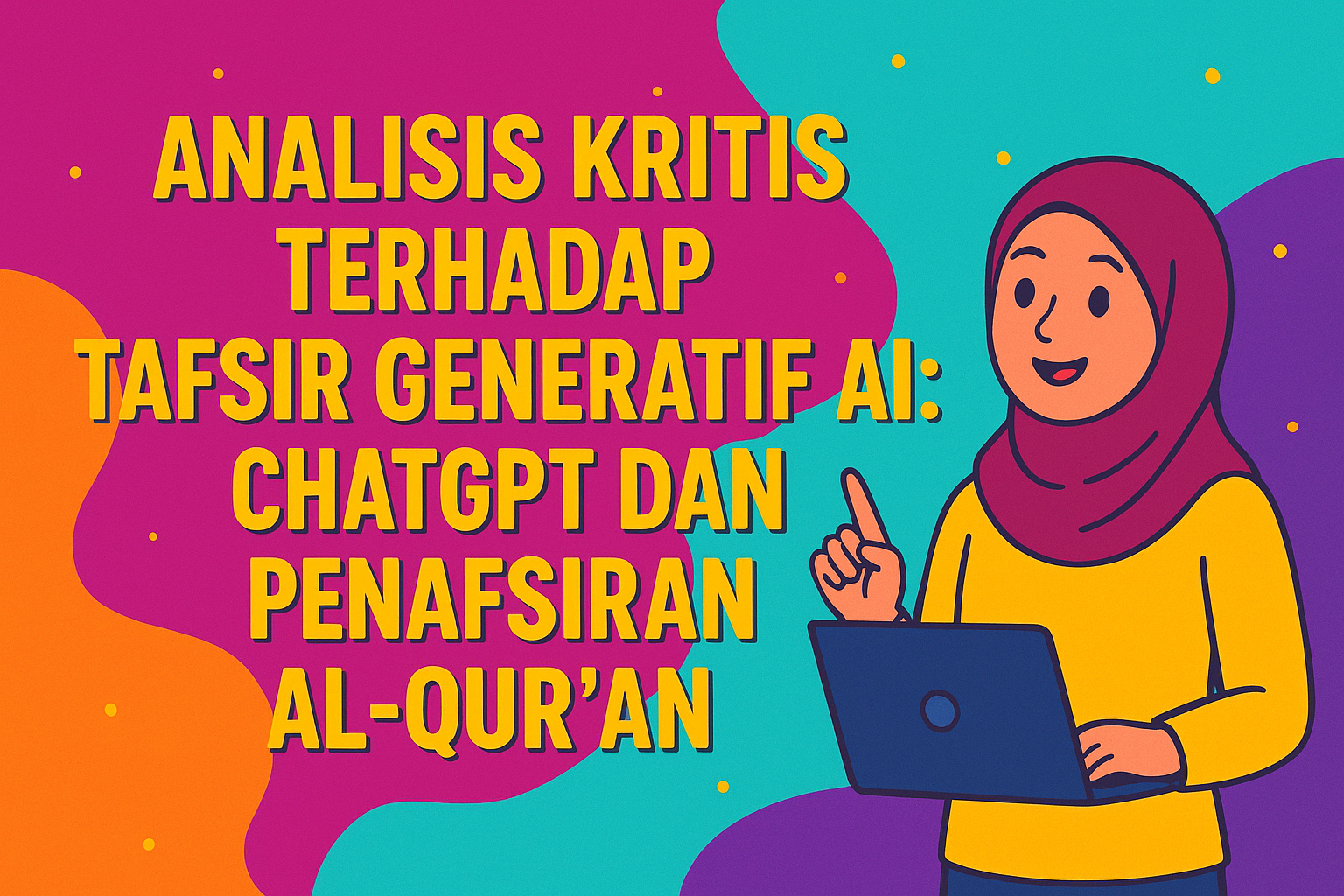ANALISIS KRITIS TERHADAP TAFSIR GENERATIF AI: CHATGPT DAN PENAFSIRAN AYAT-AYAT AL-QUR'AN
Keywords:
ChatGPT; Qur’anic Exegesis; Islamic Epistemology; Digital Islamic LiteracyAbstract
The development of Artificial Intelligence (AI) technology has brought new challenges to the Islamic world, particularly in the practice of Qur’anic exegesis. ChatGPT, as one form of generative AI, is now being used by some segments of society to quickly and practically access interpretations of Qur’anic verses. This study aims to critically analyze how ChatGPT operates in the process of tafsir and to what extent its epistemological validity stands within the context of traditional Islamic exegesis. Using a qualitative approach and library research method, this article finds that although AI offers advantages in terms of speed and linguistic capability, it lacks spiritual foundation, scholarly transmission (sanad), and authoritative methodologies developed by classical exegetes. ChatGPT tends to produce literal, synthetic, and ahistorical interpretations without considering essential aspects such as social context, asbāb al-nuzūl (occasions of revelation), maqāṣid al-sharī‘ah (objectives of Islamic law), and foundational Islamic sciences. Therefore, strong digital Islamic literacy and strict academic oversight are needed to prevent AI from being misused as a religious authority. AI can serve as an educational tool in Islamic studies, but it cannot replace the role of scholars and classical tafsir literature in comprehensively understanding the Qur’an.
References
Abidin, M. Z. (2018). Epistemologi tafsir dan dinamika tafsir kontemporer. Bandung: Humaniora.
Al-Haritsi, M. R. (2021). Tantangan Pendidikan Islam di Era Disrupsi Digital. Surabaya: Uwais Inspirasi Indonesia.
Aziz, A. (2022). Pendidikan Islam dan Arus Globalisasi. Yogyakarta: Pustaka Pelajar.
Fahmi, R. A. (2021). Reformulasi kurikulum Islam dalam menjawab era revolusi industri 4.0. Jurnal Pendidikan Islam Modern, 5(2), 67–105.
Hamdani, R. (2022). Kecerdasan buatan dan dekonstruksi epistemologi Islam. Jurnal Filsafat dan Agama, 5(1), 45–68.
Hasan, M. (2021). Transformasi Digital dan Pendidikan Islam. Jakarta: Kencana.
Husaini, A. (2022). Mewaspadai Sekularisasi Pendidikan Islam di Era Digital. Bandung: Pustaka Fitrah.
Kurniawan, A. (2020). Ancaman tafsir instan dalam era digital. Jurnal Dakwah dan Komunikasi Islam, 7(1), 43–50.
Kurniawan, A. (2020). Ancaman tafsir instan dalam era digital. Jurnal Dakwah dan Komunikasi Islam, 7(1), 43–50.
Nasution, H. (2021). Metodologi tafsir dan tantangan teknologi digital. Jakarta: Pustaka Dakwah.
OpenAI. (2023). GPT-4 Technical Report. https://Google.com
Rachmawati, L. (2023). Etika penggunaan AI dalam studi keislaman. Jurnal Studi Islam Digital, 2(1), 77–88.
Rahmawati, S. (2019). Integrasi nilai Islam dalam pembelajaran di era digital. Jurnal Tarbiyah Islamiyah, 4(2), 58–72.
Syafi’i, A. (2022). Pendidikan Islam di era digital: Peluang dan tantangan. Yogyakarta: Pustaka Pelajar.
Syarif, A. M. (2020). Tantangan pembelajaran Islam di masa globalisasi. Jurnal Pendidikan Agama Islam, 6(1), 89–97.
Wahid, M. (2021). Islam dan teknologi: Respons keilmuan Islam terhadap era digital. Malang: Baytul Hikmah Press.
Yazid, M. (2019). Tafsir dan transformasi digital dalam era revolusi industri 4.0. Jurnal Ilmu Al-Qur’an dan Tafsir, 4(2), 76–88.
Zarkasyi, H. F. (2004). Kaedah tafsir: Prinsip dan metode penafsiran al-Qur'an. Jakarta: Gema Insani.
Zarkasyi, H. F. (2021). Otoritas tafsir dalam ancaman teknologi. Jurnal Studi Islam Kontemporer, 6(1), 72–84

Downloads
Published
How to Cite
Issue
Section
License
Copyright (c) 2025 Jurnal Islam Pesisir dan Kajian Keislaman

This work is licensed under a Creative Commons Attribution-NonCommercial 4.0 International License.





